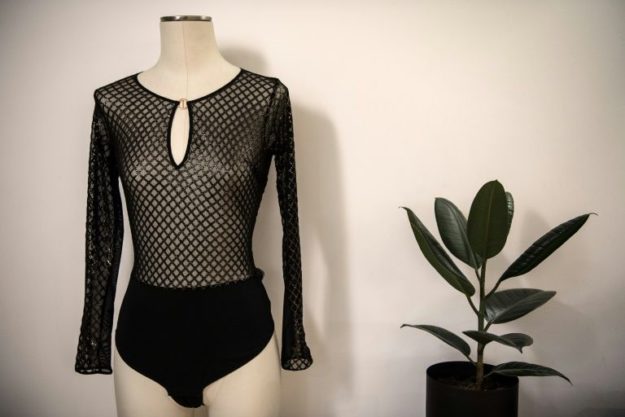
Below her chic little shop on the Rue du Jour, the designer pieces together bits of lace, sometimes combined with lurex, taking care to gather up scraps to be used in other models or donated to fashion schools.
"I was always careful when it came to cutting. I have worked in factories and seen the waste generated by industrial processes,” says the 30-year-old who intends to create another line to be made in Morocco.
 PHOTO:AFP
PHOTO:AFPCasile launched her eponymous line in 2012, with most suppliers in France and a standardised production process to limit losses. All the fittings are identical and “made from zamak, which requires half the water compared to other metals," she notes in reference to an alloy of zinc, aluminium, magnesium and copper.
She also limits her range of colours and uses certified Oeko-tex dyes that are free of toxic substances. Finally, she repairs her wares for up to four years. "Ok, it keeps the client on board, but it is also with a view towards not seeing them thrown away," she explains.
The approach has begun to gain ground in the fashion industry as environmental concerns encourage more and more companies to explore sustainable methods. Young designers are spearheading the trend, which remains a niche within a sector that was worth an estimated $2.7 billion in France alone last year.
 PHOTO:AFP
PHOTO:AFP"As a consumer, I did not find a brand that offered sexy outfits that were completely responsible along the entire production chain," explains Margot Dargegen, 25, who founded Nenes Paris with recycled lace a year ago. "Scraps of fabric and plastic bottles are ground up and turned into fibres that become thread that you can then make the material you want to from."
Chains sign up
"When we started out, finding eco-friendly materials was harder, but we see now that things are starting to move," says Mathilde de Sacy, 28, who created the Olly brand with a friend three years ago. "We use certified material, organic GOTS cotton, lace made with recycled fibres and Oeko-Tex 100 dyes. We also wanted the work to be done in Europe to ensure proper working conditions," she adds.
"Consumers pay more and more attention to such things," notes Cecile Vivier-Guerin, marketing director for a lingerie show in Paris. In particular, suppliers are offering wider ranges of fabrics that respect the environment, she said. They include classic recycled cotton or satin, or bra shells made from coffee fibre.
 PHOTO:AFP
PHOTO:AFPA Swiss company offers a line of lingerie that is completely biodegradable. In a sector that has stagnated in recent years, "it encourages consumers to buy better quality products that require less transport and add value," Vivier-Guerin said. "It's a significant stimulus."
National brands such as Etam have taken note and now offer collections made from recycled lace as well. "Everyone understands that it is an important factor consumers look for," says Gildas Minvielle, head of the Economic Observatory at the French Fashion Institute.
That said, "100% ecological is hard to attain," admits Casile, who emphasises that brands interested in the idea must go beyond the purely marketing aspect.
Have something to add to the story? Share it in the comments below.























COMMENTS
Comments are moderated and generally will be posted if they are on-topic and not abusive.
For more information, please see our Comments FAQ